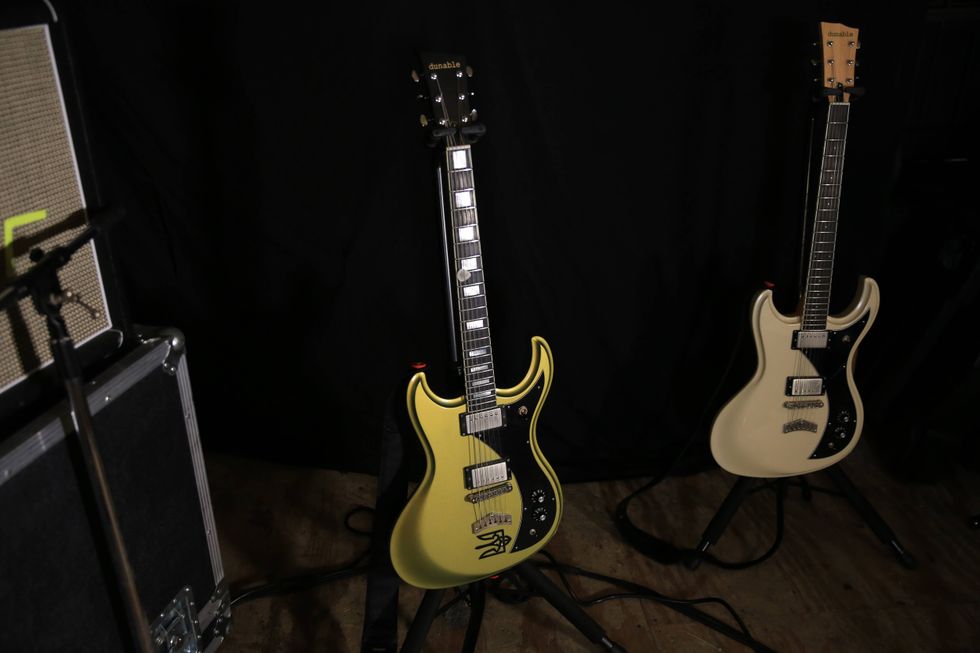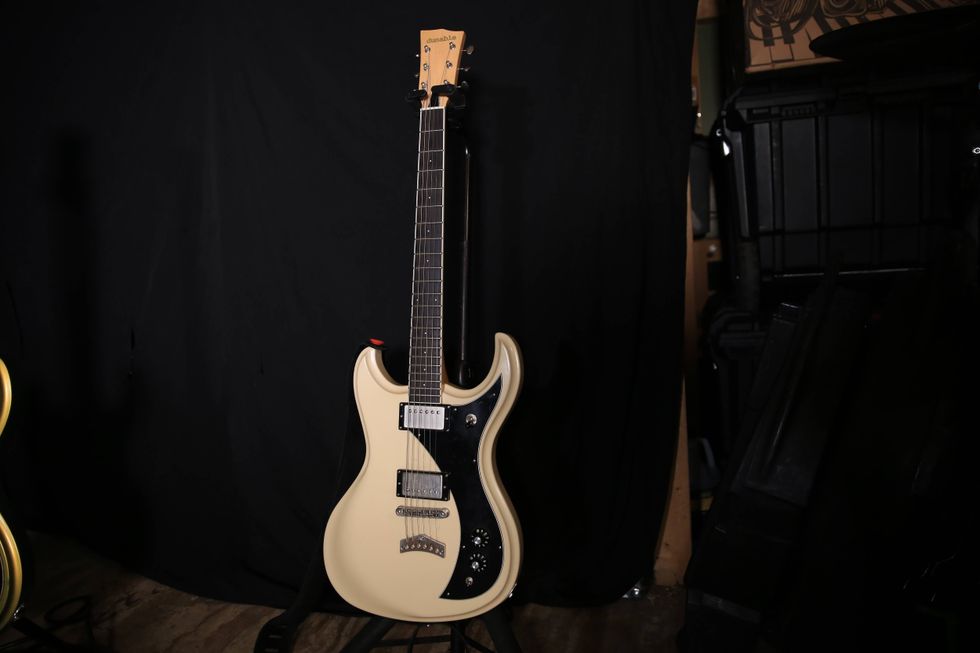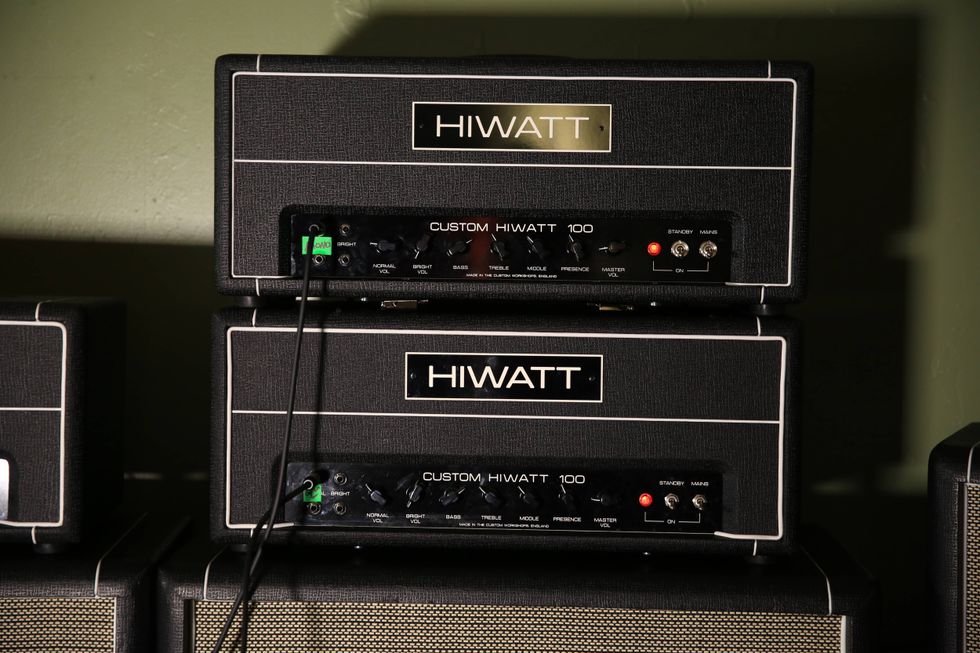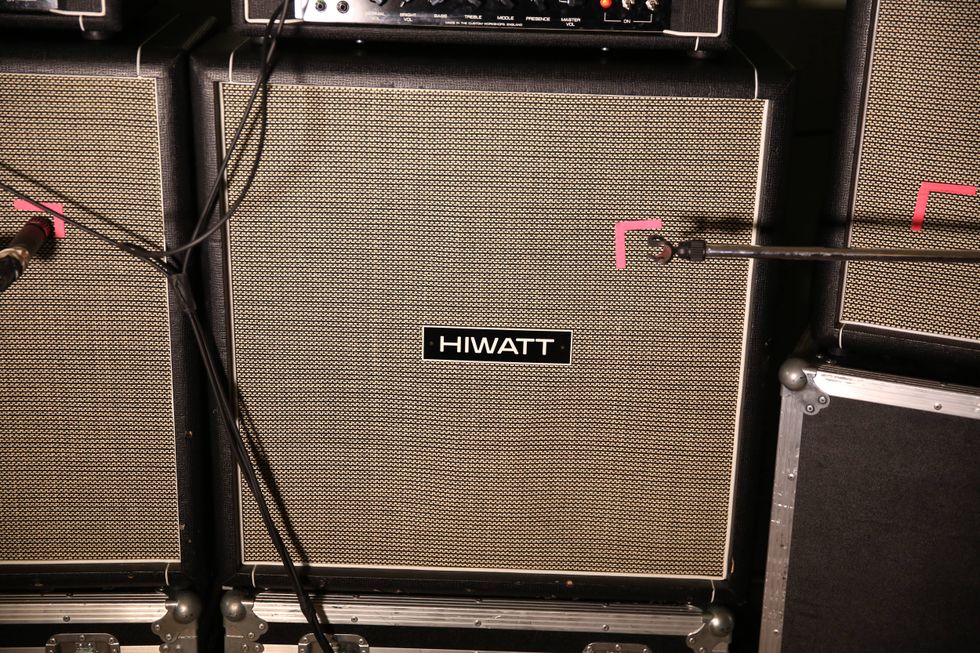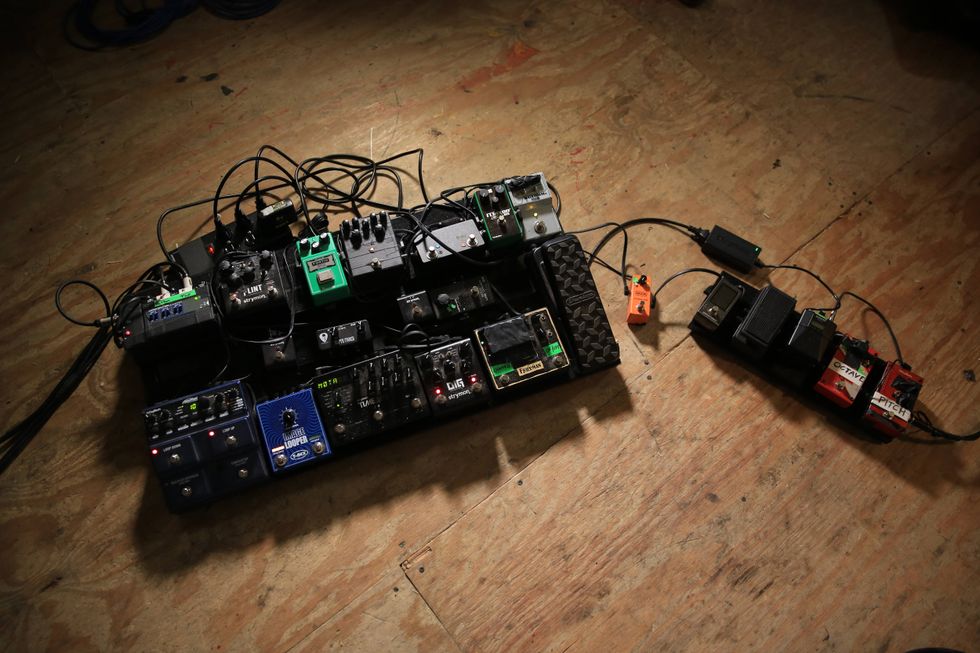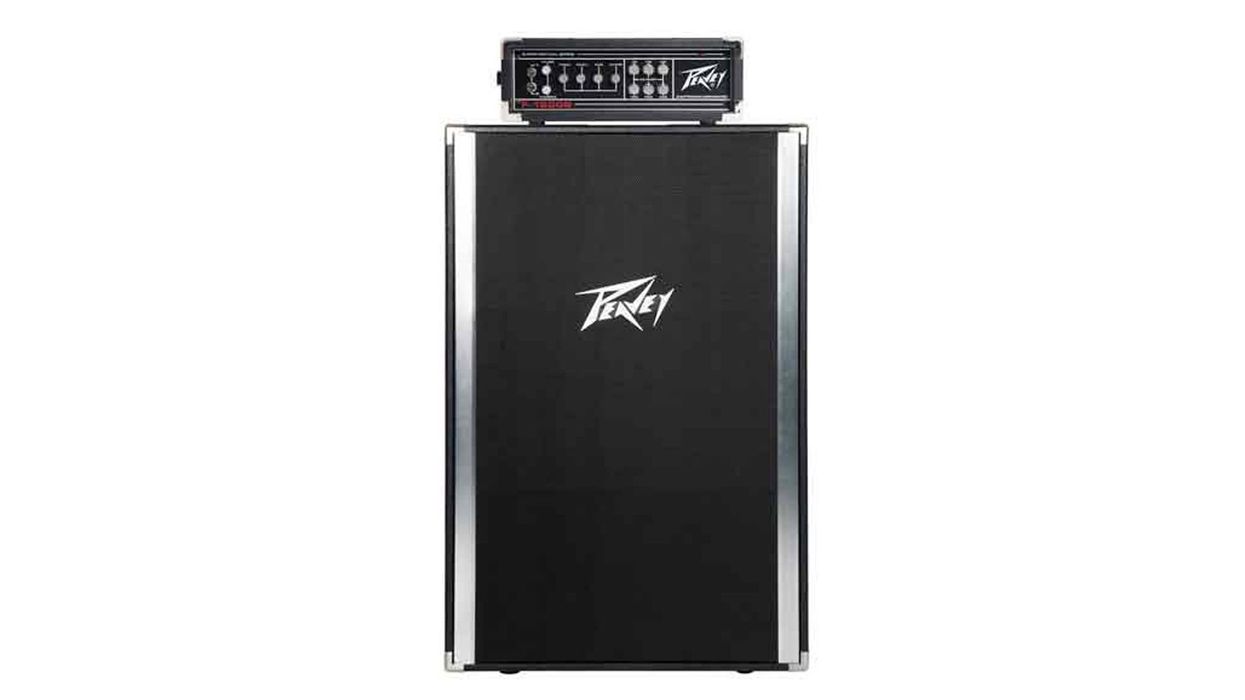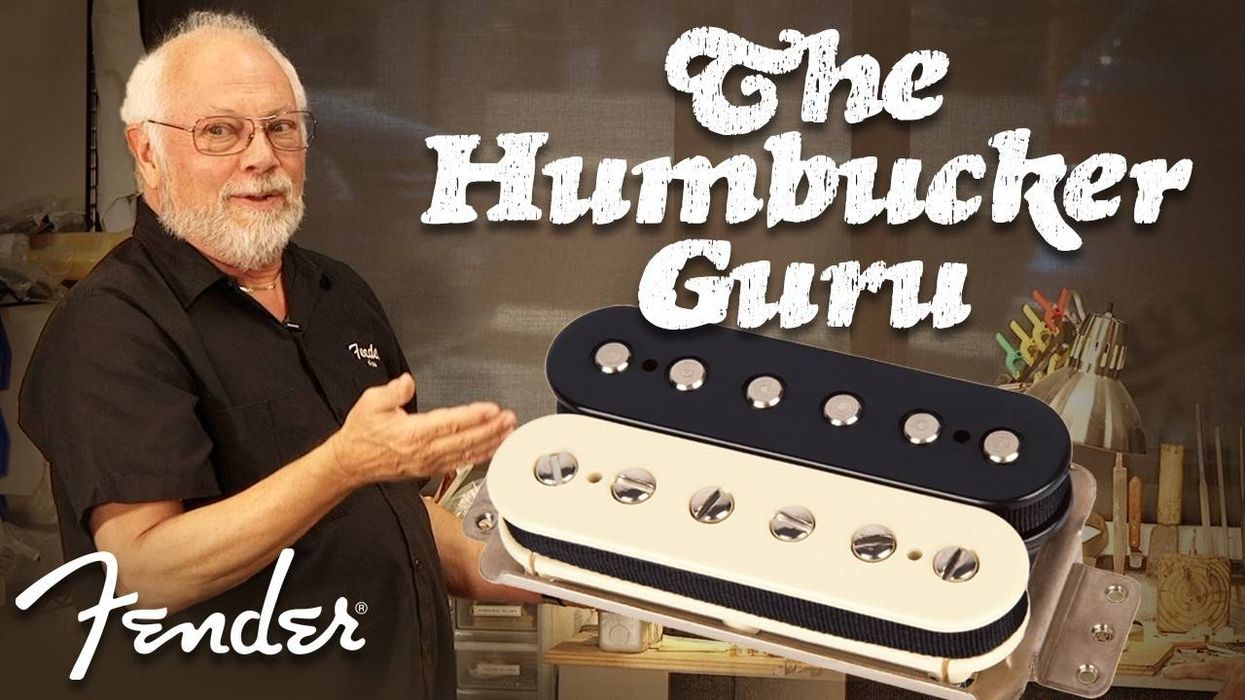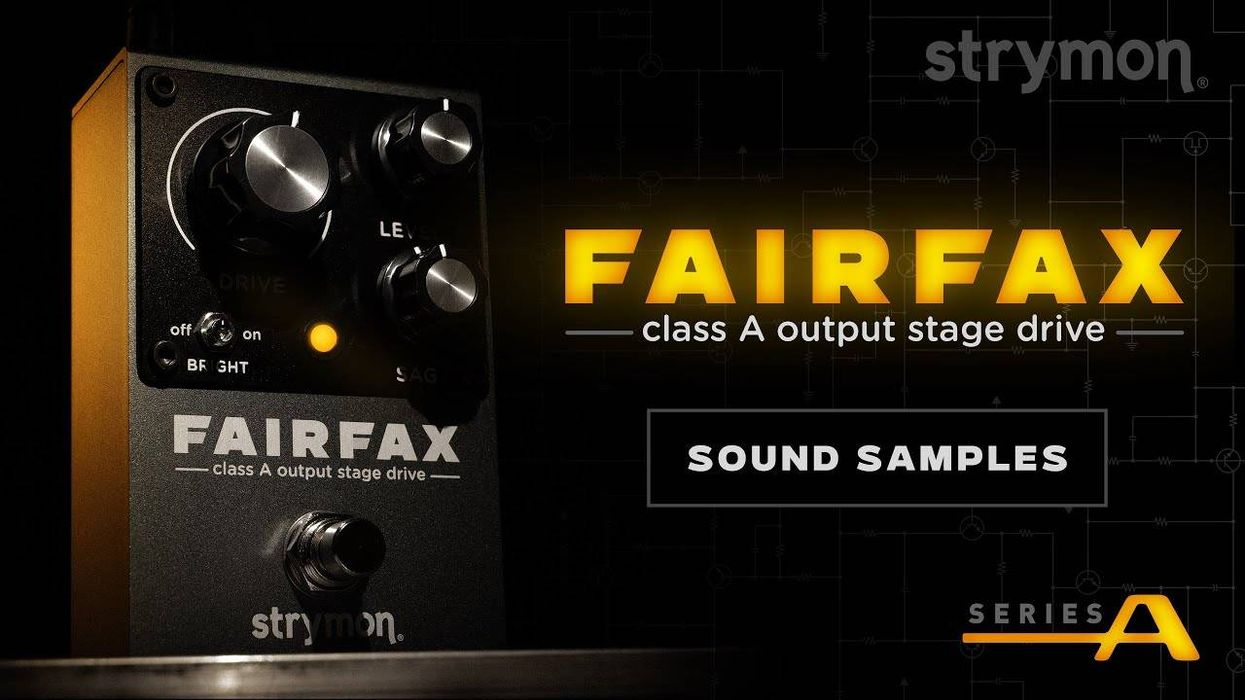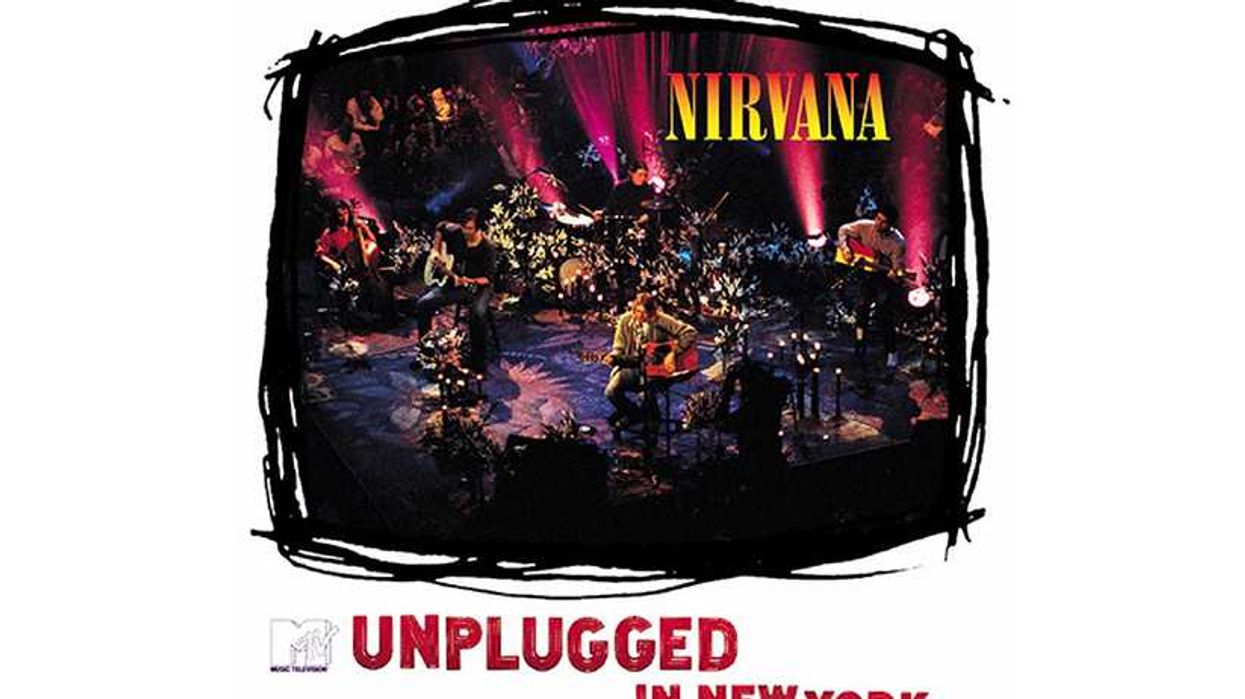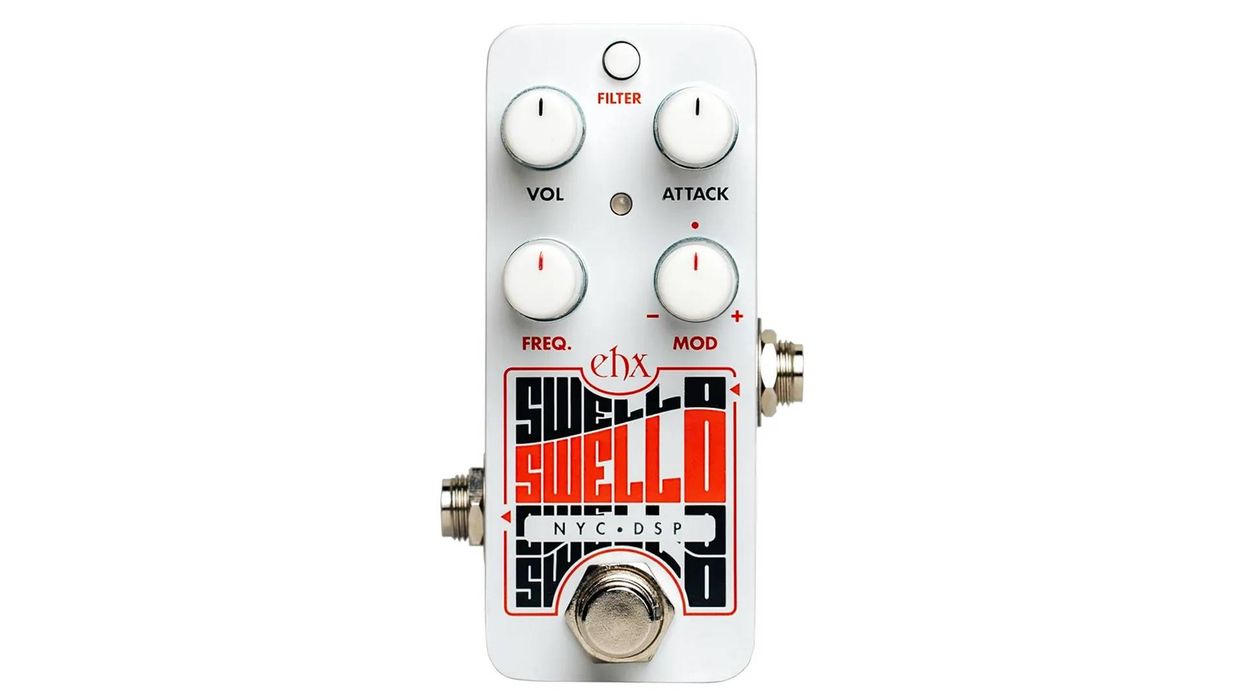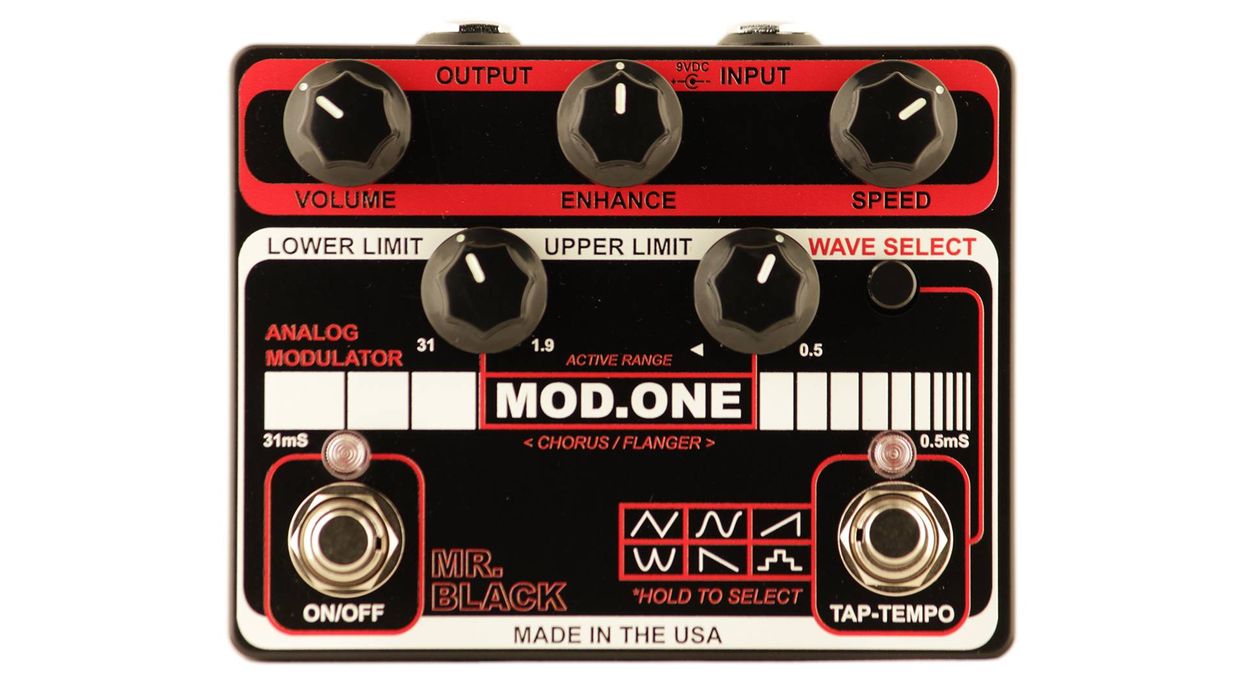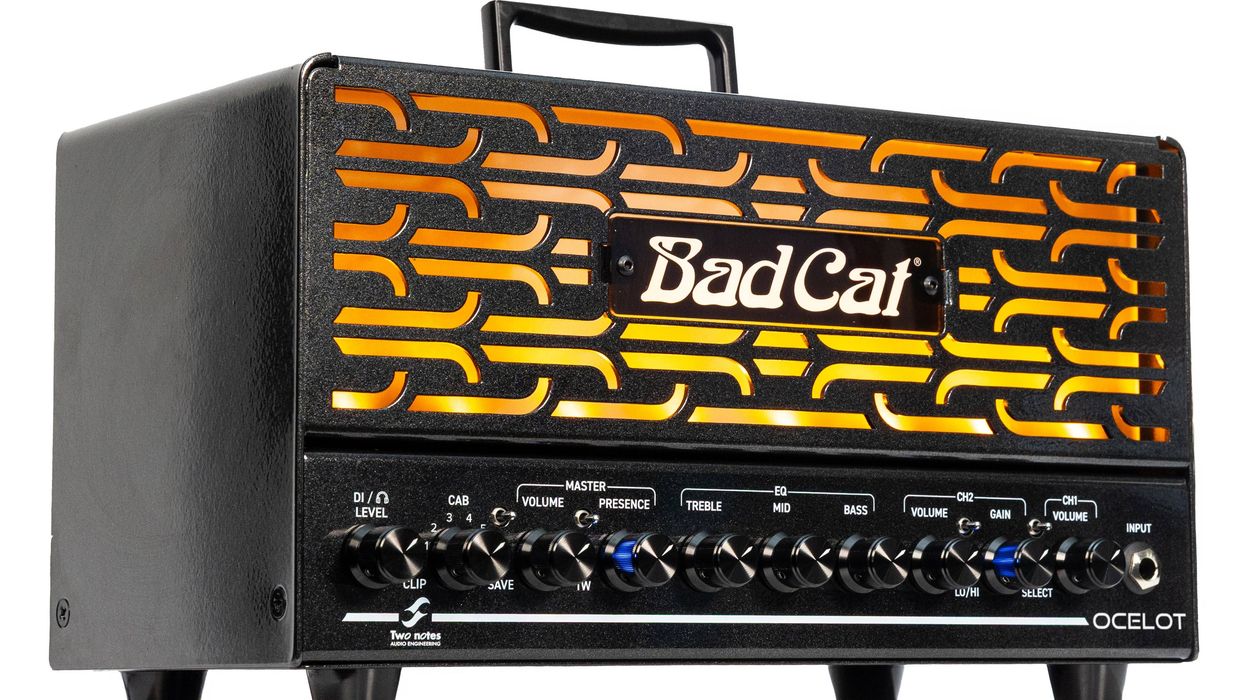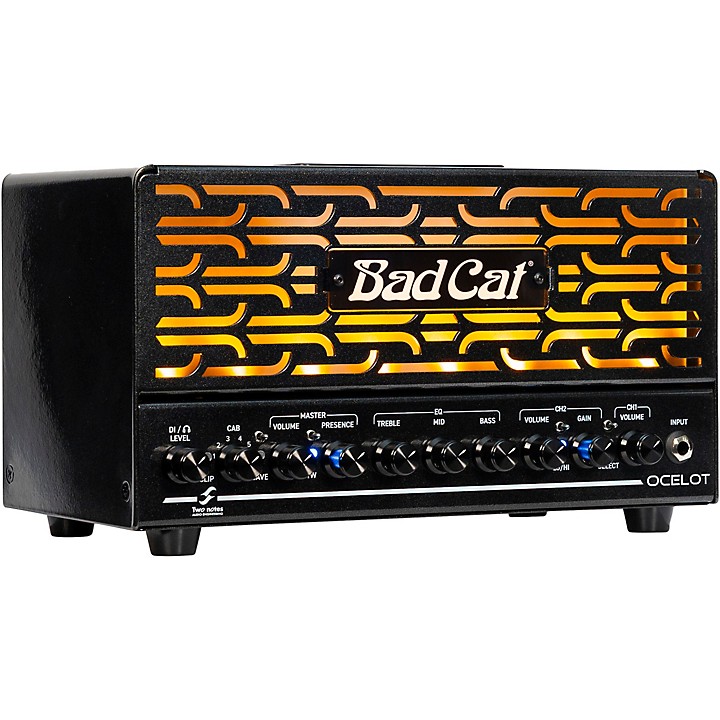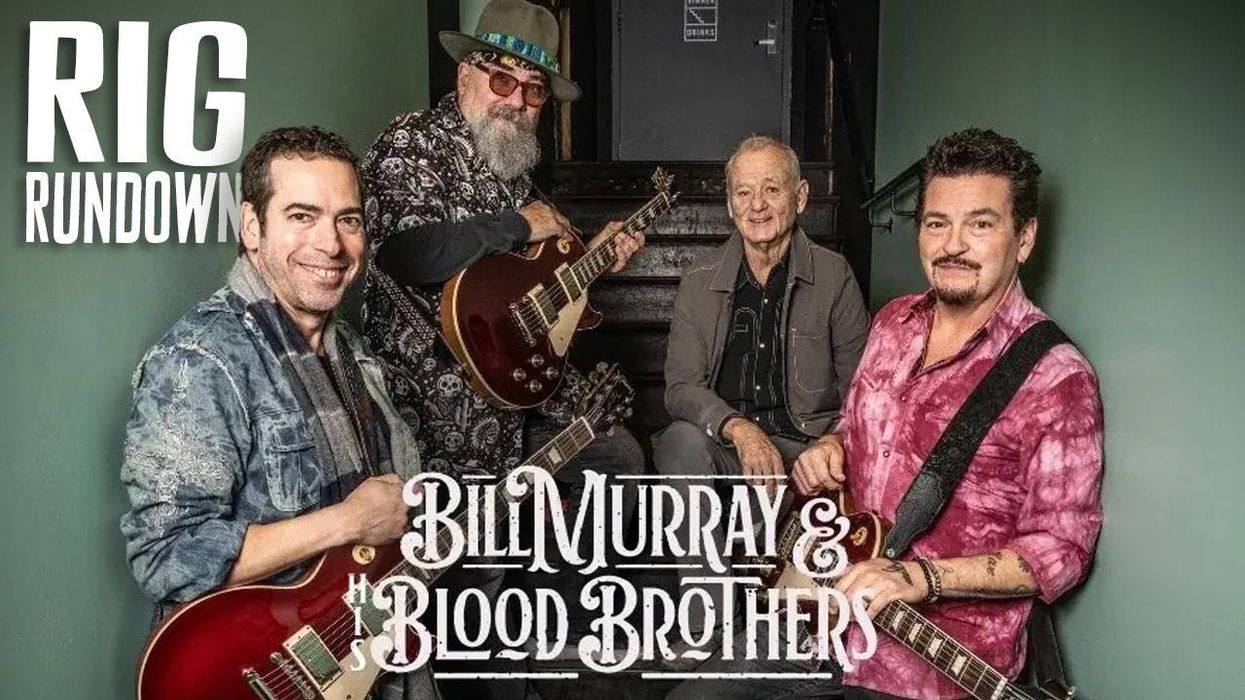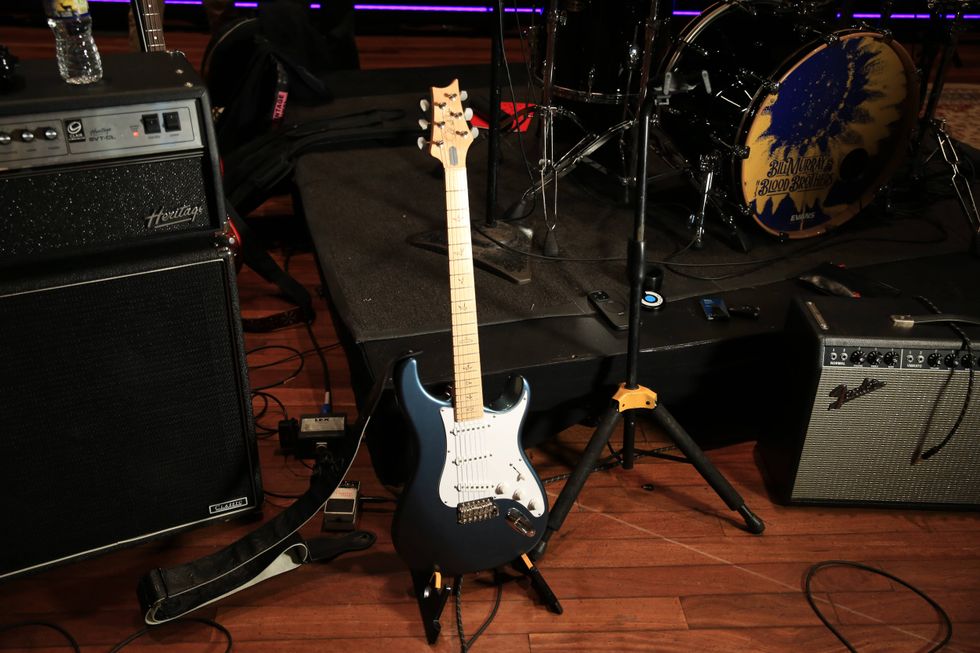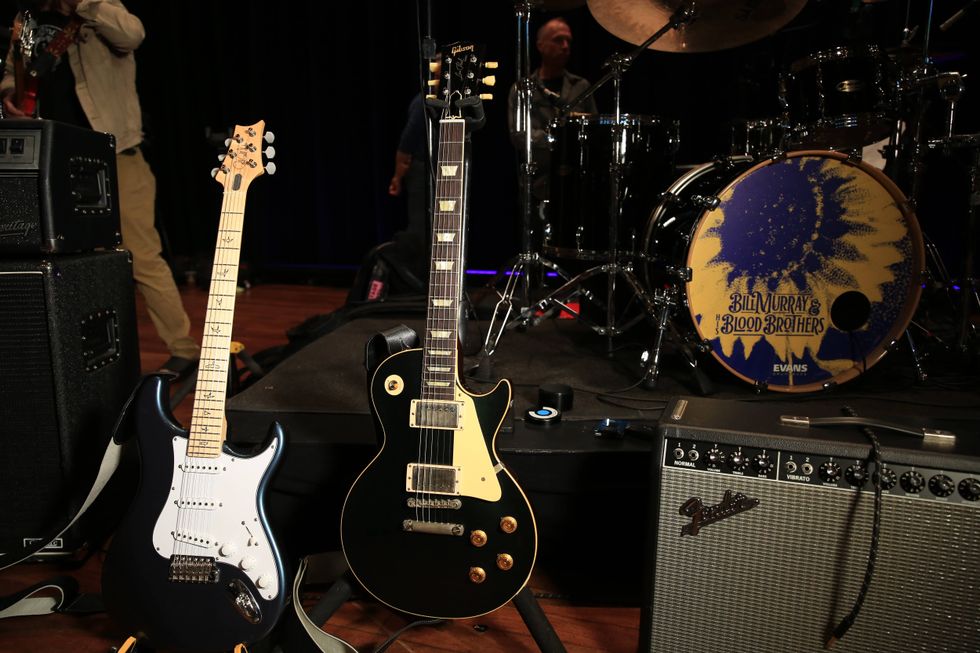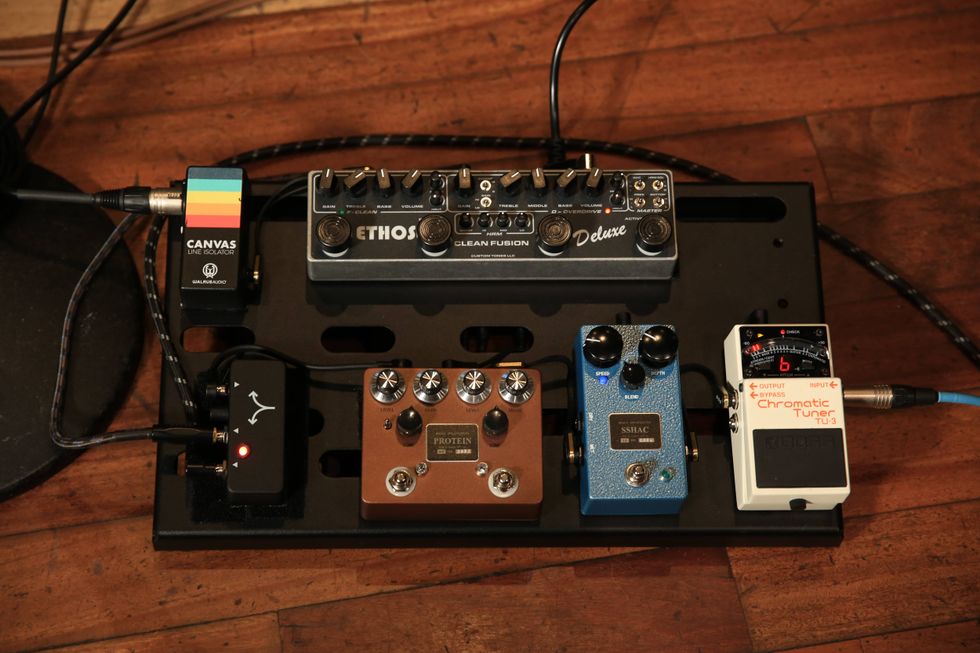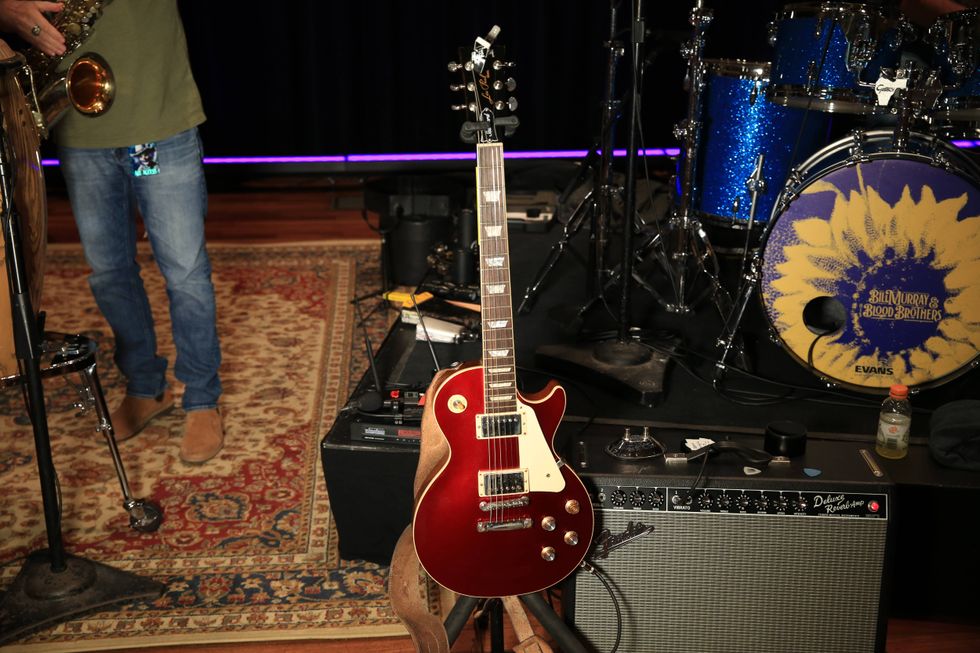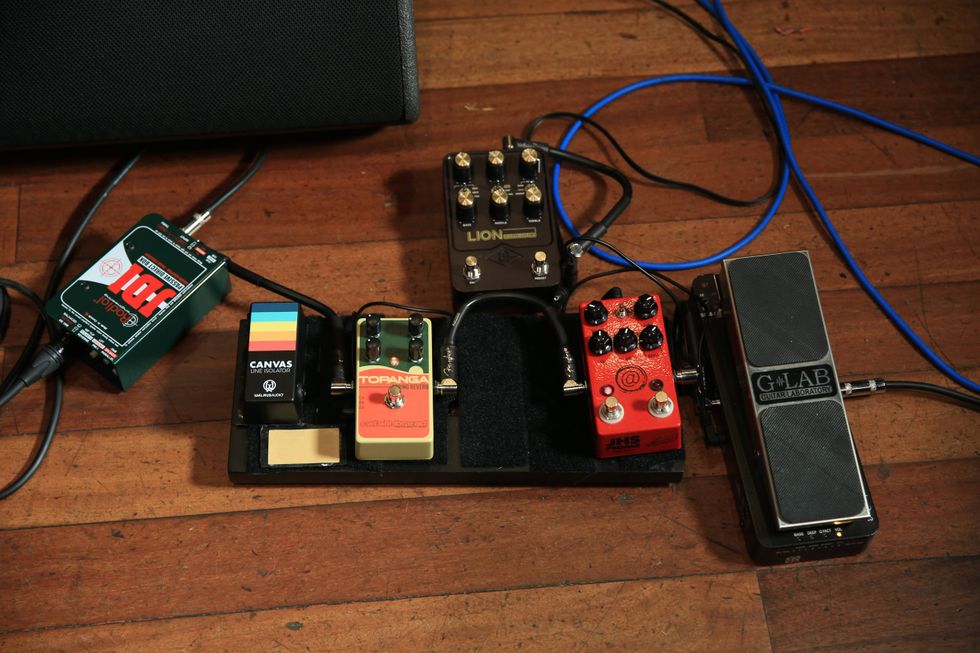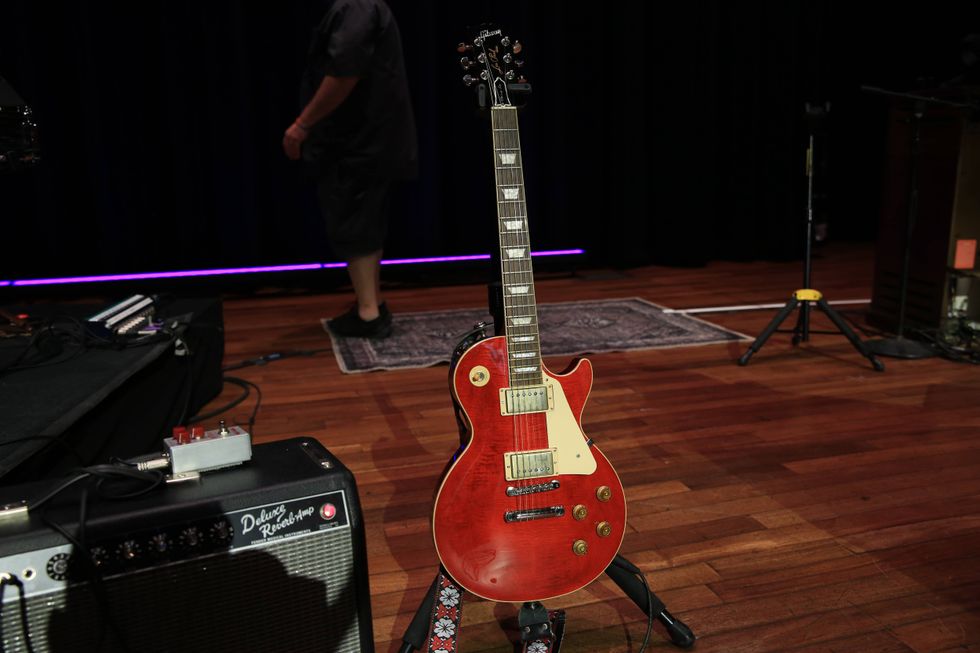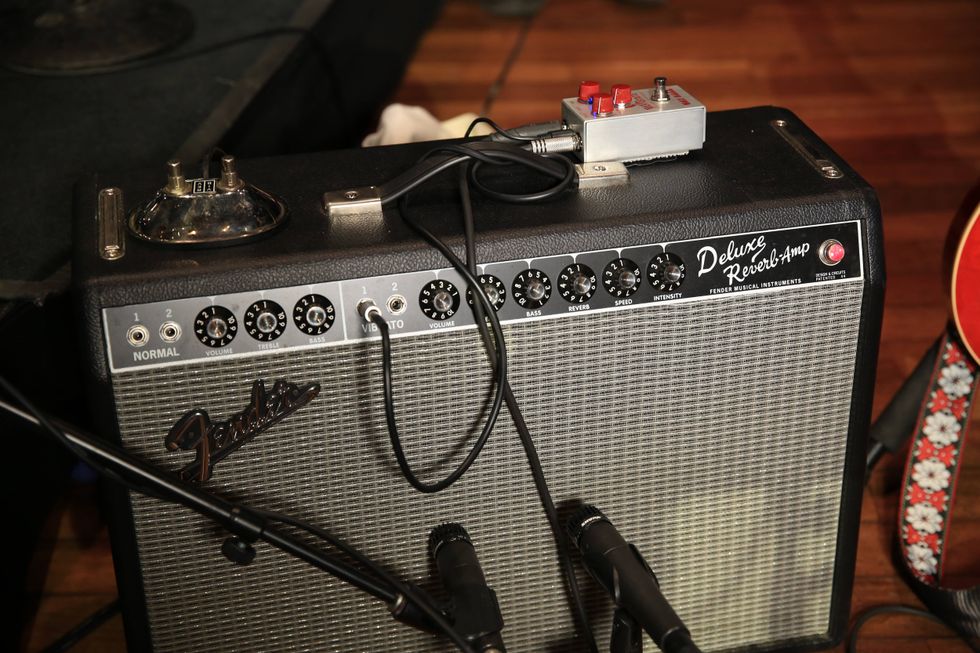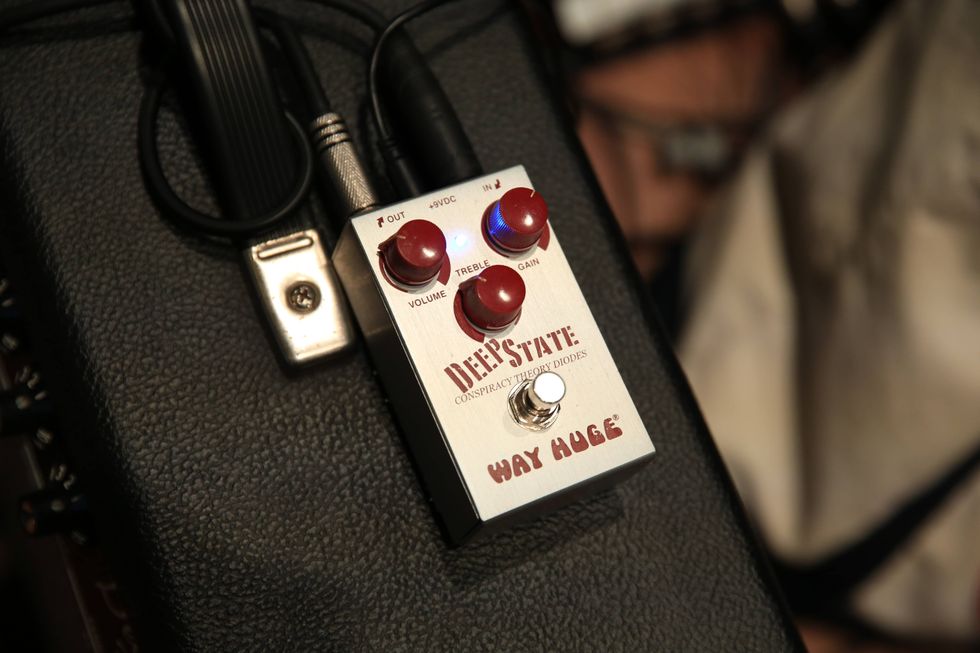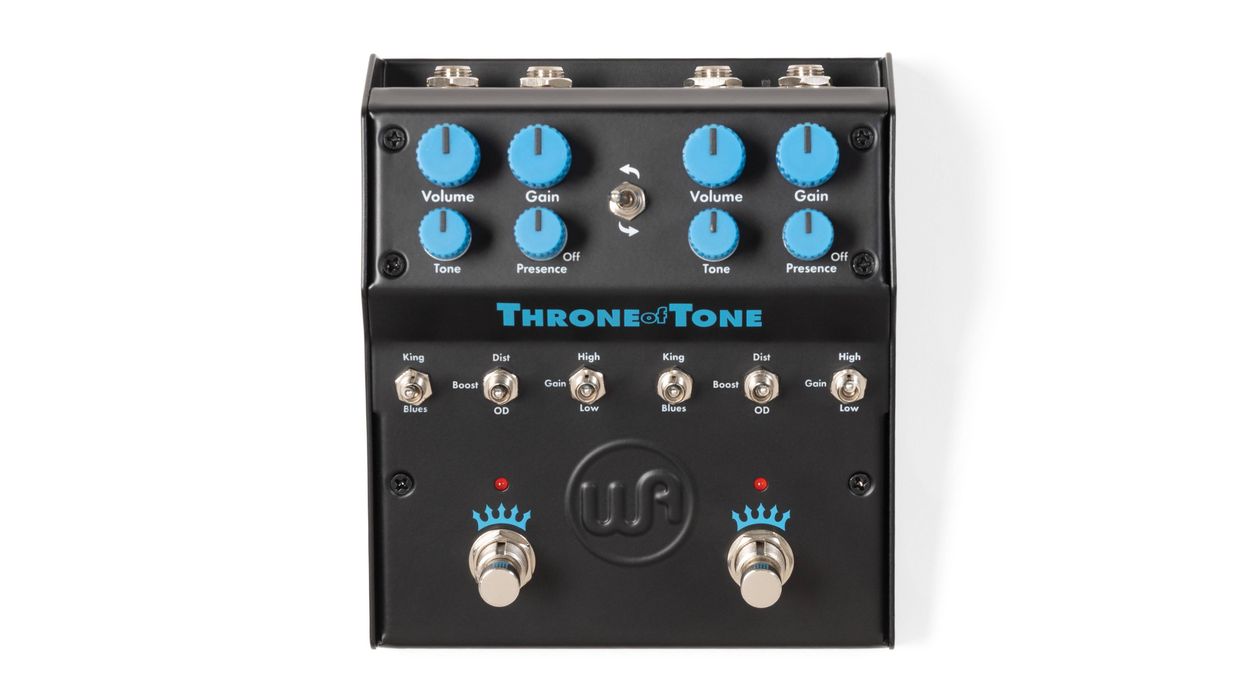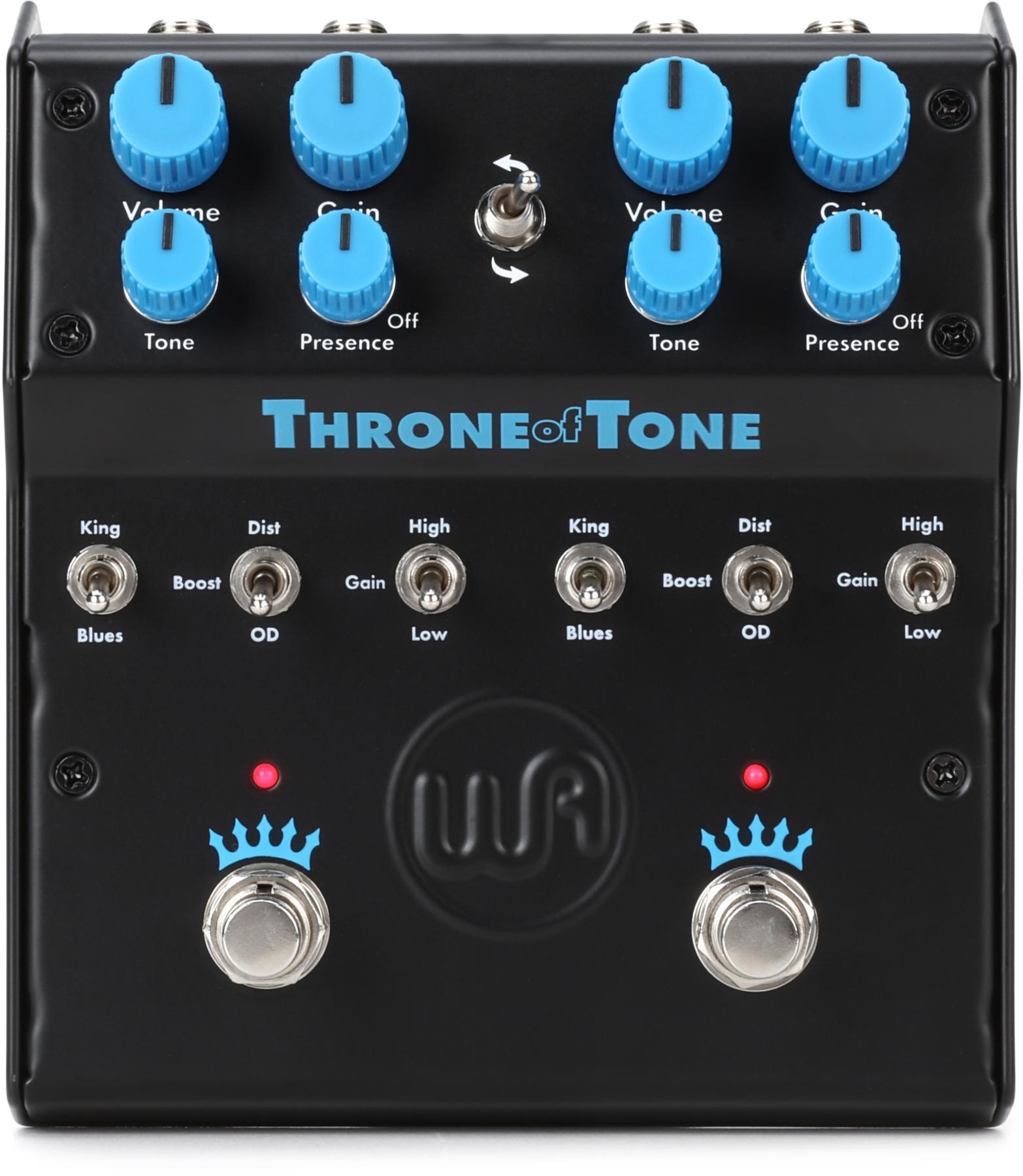Recorded using a Squier/Warmoth baritone Jazzblaster with Curtis Novak Widerange Jazzmaster pickups into a ‘76 Fender Vibrolux Reverb miked with a Royer R-121 feeding an Apogee Duet going into GarageBand with no EQ-ing, compression, or effects.
Clip 1: Middle pickup position for rhythm progression and beefy riff, then in bridge position for high lead—all parts played with Tsukuyomi bypassed first, then engaged with gain knob at 10 o’clock and mids toggle activated.
Clip 2: Neck pickup riff with Tsukuyomi bypassed first, then engaged with gain knob at max and mids toggle activated.
RatingsPros:Simple, killer alternative for easily at adding zing, sting, and burn to single-coil-ish sounds. Cons: Could probably fit in a smaller footprint. Slightly pricey. Can sound harsh with traditional humbuckers. Street: $159 Ground Control Tsukuyomi groundcontrolaudio.com | Tones: Ease of Use: Build/Design: Value: |
If you’ve tried using a boost/buffer pedal or overdrive to nudge your amp to saturation, only to find that it disrupts your carefully dialed EQ, you may love Ground Control’s Tsukuyomi midrange booster. Named after the Shinto moon god, this beautifully decorated, JFET-buffered stomp from Montreal, Canada, has a single gain control offering up to 20 dB of op-amp derived clean boost, plus a 2-position toggle that gooses frequencies between 880 Hz and 1 kHz by 12 dB when you flick it to the left.
Tested through a silverface Fender Vibrolux Reverb and a Celestion Ruby-stocked Goodsell Valpreaux 21, Tsukuyomi became instant best buds with my Telecaster. Ground Control is up-front about the pedal not being designed for humbuckers (and I can confirm that the mid boost really doesn’t complement a Les Paul), but I found that it worked just as wonderfully with the Widerange-style humbuckers in my baritone Jazzmaster as it did with the Telecaster. I’ve had trouble dialing satisfactory clean boosts with both these instruments in the past, even with a very popular Klon-style overdrive. But whether Tsukuyomi’s was dialed for moderate gain or maxed, engaging its midrange toggle instantly imbued these settings with everything from sparkling brilliance to bristling lead tones. I’m not gonna lie—getting these sorts of tones this simply was both refreshing and revelatory.
Test gear: Squier/Warmoth baritone “Jazzblaster” with Curtis Novak JM-WR pickups, Squier Vintage Modified Telecaster Custom with Curtis Novak JM-V and Tele-V pickups, Gibson Les Paul Traditional with 57 Classics, 1976 Fender Vibrolux Reverb, Goodsell Valpreaux 21


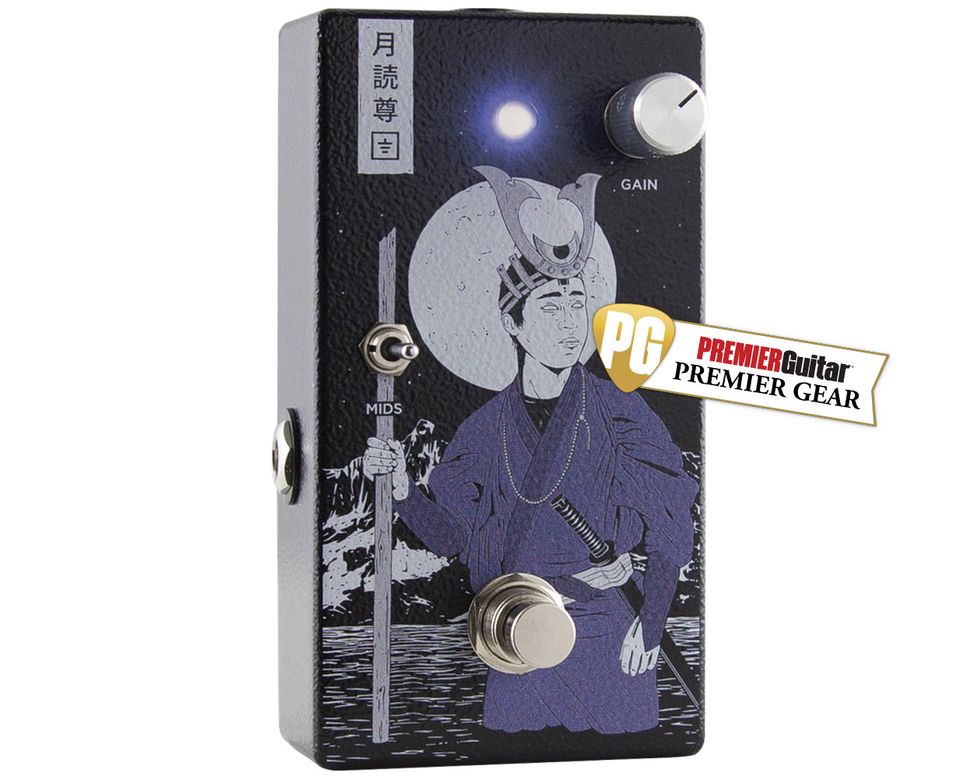

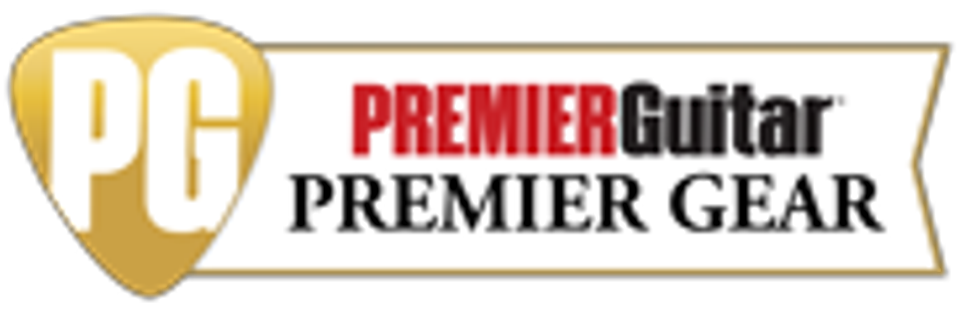
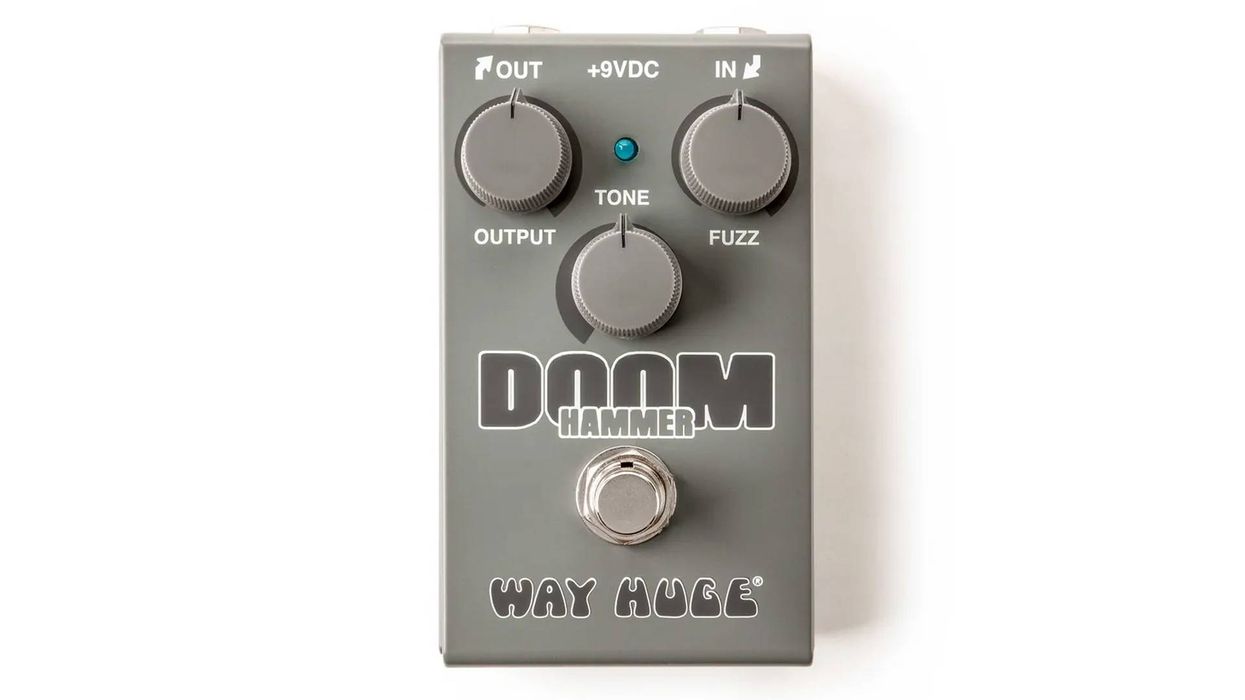
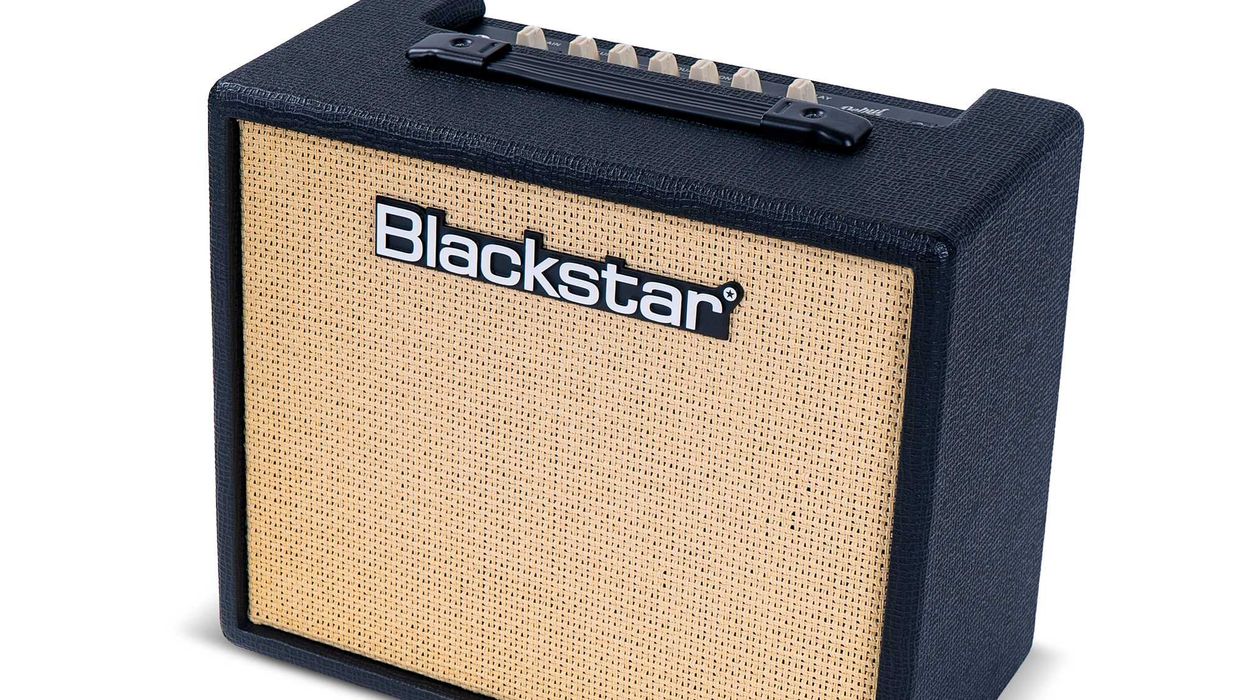
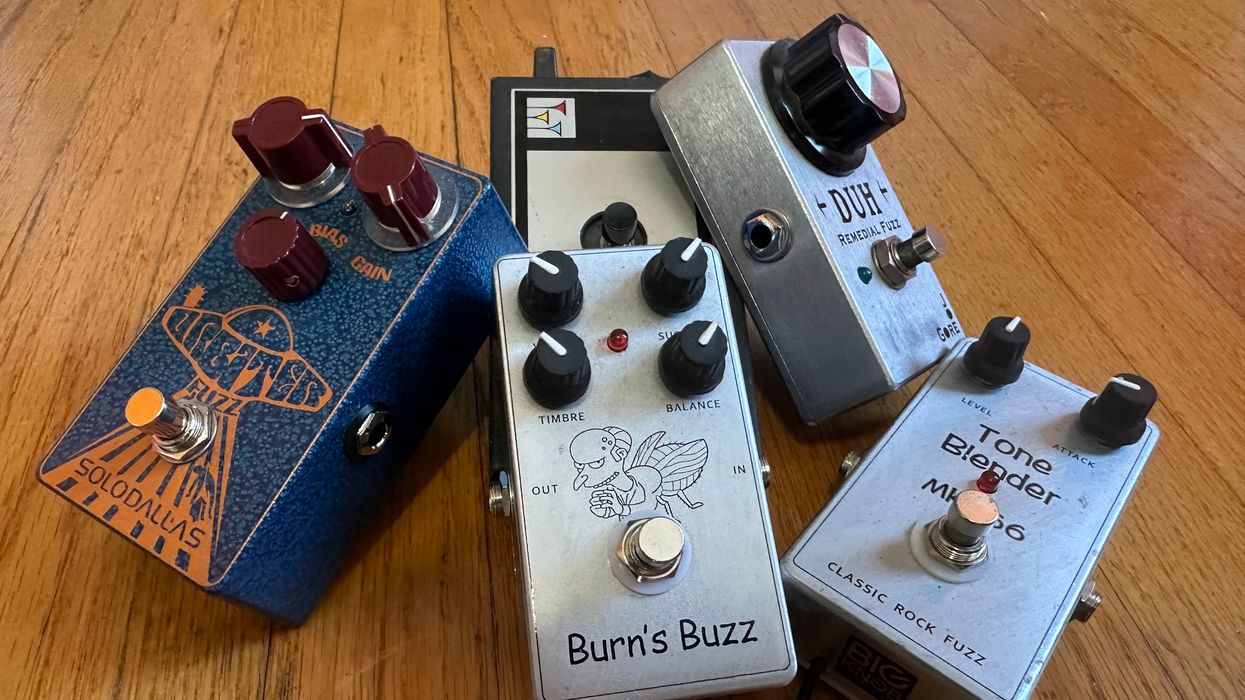

![Rig Rundown: Russian Circles’ Mike Sullivan [2025]](https://www.premierguitar.com/media-library/youtube.jpg?id=62303631&width=1245&height=700&quality=70&coordinates=0%2C0%2C0%2C0)
